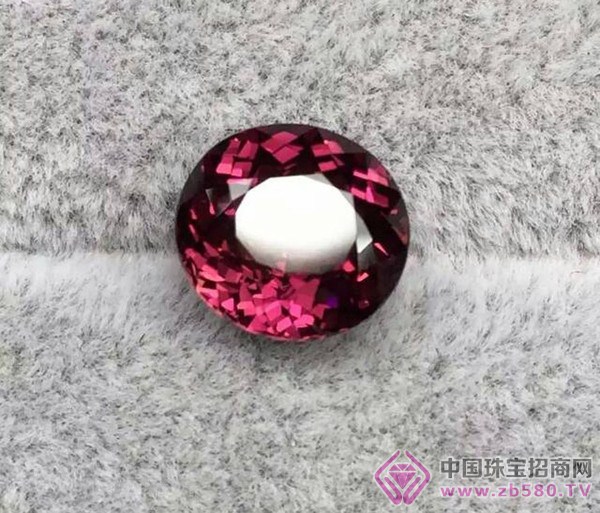
In 1768, the famous Swedish scientist Linnes discovered that the tourmaline is piezoelectric and pyroelectric, and the mineralogical name is "tourmaline". The color of the tourmaline is also much richer than the crystal, subdividing as many as 15 kinds of complex colors. The hardness of tourmaline is also higher than that of crystal, and the magnetic field of tourmaline is several dozens to hundreds of times of the same color crystal.
What makes Bixi so special? The natural tourmaline is complex in its chemical composition and is a complex silicate. So far there has been no synthetic tourmaline.
The chemical composition of tourmaline: cyclic silicate mineral, the composition is very complicated, the chemical formula is as follows: (Na, Ca) (Mg, Fe2+, Fe3+, Li, Al) 3Al6[Si6O18](BO3)3(OH,F)4 The ingredients can be divided into three series: lithium tourmaline, tourmaline and iron tourmaline. The first two series often have gemstone varieties, while the latter can't be used as gemstones because of the black color.
Crystalline and morphology: Trigonal (one-axis negative). Columnar, the cylinder develops vertical stripes, and the cross section of the column is an arc triangle.
Specific gravity and hardness: specific gravity 3.06~3.26; hardness 7~7.5
Cleavage, fracture and toughness: no cleavage; shell-like fracture; good toughness, but greener will be brittle after heat treatment.
Color: Almost all colors can appear, even two or more colors on a crystal.
Transparency and gloss: transparent - opaque; glass luster.
Polychromism: Strong. Red and pink: red and yellow red; green: blue green and yellow green to dark brown green; blue: light blue and dark blue; yellow green: blue green and yellow green to brown green
Refractive index: 1.624~1.644; black can be as high as 1.727~1.657.
Birefringence and dispersion: birefringence: 0.020; dispersion: 0.017
Singularity: cat's eye and discoloration; discoloration is brownish red and yellowish green.
Ultraviolet fluorescence: pink has weak purple fluorescence, others are not or difficult to see.
Absorption spectra: blue and green: almost all absorbed from the red zone to 640 nm, only a strong and narrow blue-green band at 498 nm; red and pink: a wide green band with blue lines at 458 and 451 nm.
Inclusions: Red and green often contain irregular linear gas-liquid inclusions, or appear alone or interlaced into a loose network, especially green tourmaline, which may contain dense parallel straight fiber bodies or empty thin tubes. Can show cat eye effect.
Stability: In case of strong heat melting, sudden temperature changes will rupture. Not subject to acid and alkali erosion.
Special properties: piezoelectricity and coke (thermal) electrical properties, friction can be charged.
Bosgoo(China)Tecgnology Co., Ltd121 , http://www.bosgootest.com